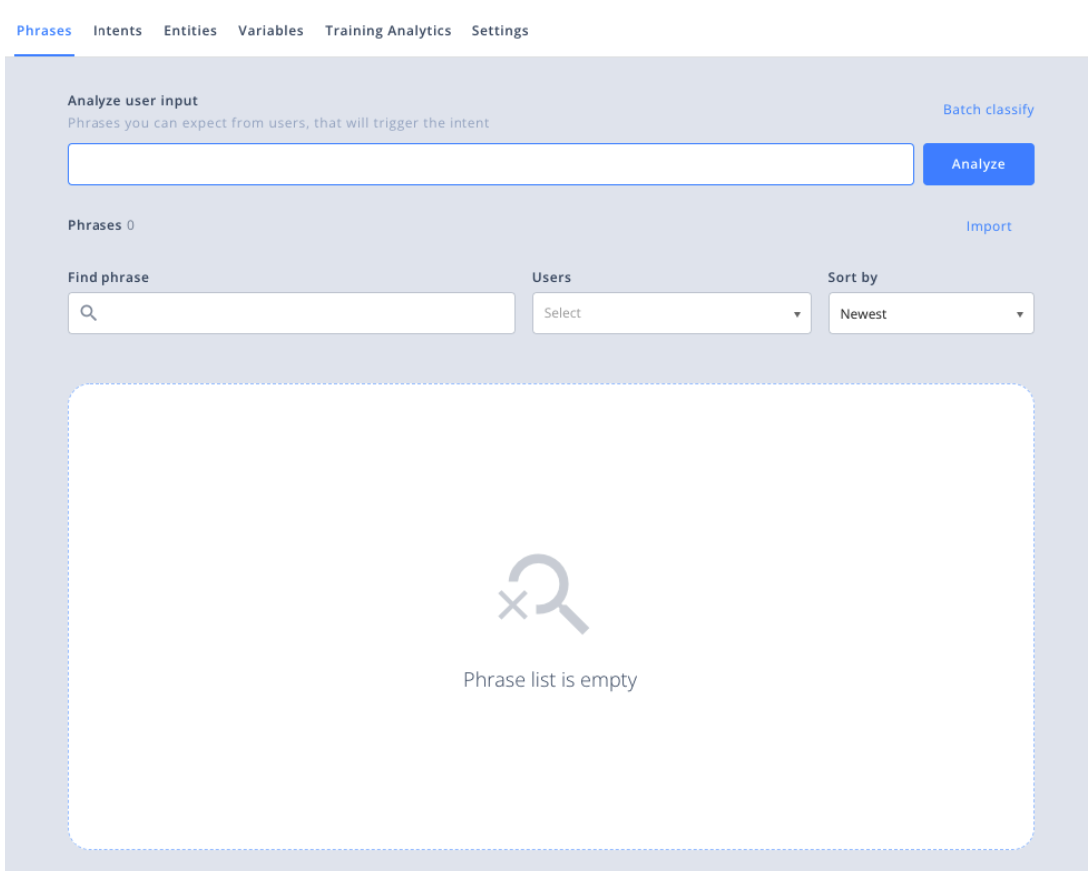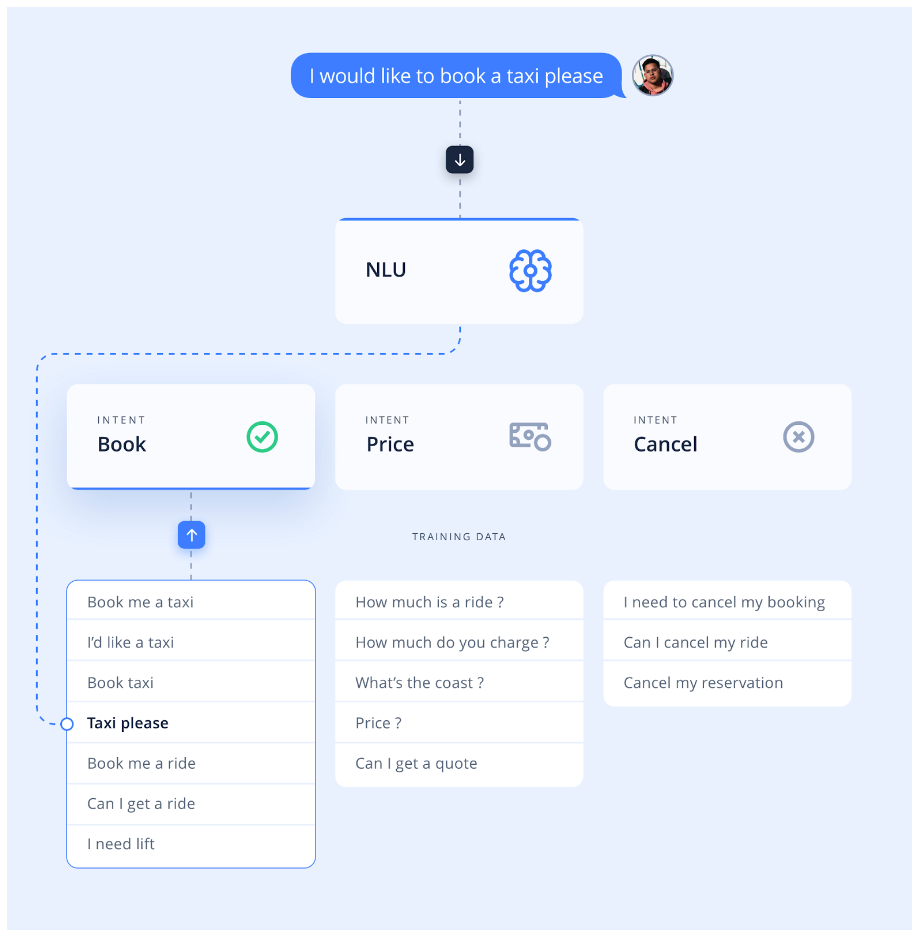Intents
Intents are about understanding users, what they mean, and what they want to achieve. Our NLU technology makes sense of human communication in the form of a phrase, question, or general utterance. It can come from text or voice.
Let’s take the example of booking a taxi.
As humans, we can request this in a multitude of ways:
“Taxi please”
“I would like to preorder a ride for tomorrow”
“Need taxi service now”
“How may I reserve a taxi”
“Can I please hail a driver”
We can see that each sentence's format, structure, and vocabulary are different. But the meaning is the same – the intent is to book a taxi.
We call these sentences- phrases.
Phrases tab
Training phrases have their own tab in Automate.

The phrases tab in the NLU module
NotePhrases may also be known as utterances and/or training data. You may see these terms used widely in conversational AI.
Intent matching

An example of phases and intent matching
The role of intents is to make the bot understand the difference between user goals. Intents organize training data into distinct groups, usually referring to specific actions.
The bot then uses them to learn how we would like it to differentiate among the different actions it should take.
A single intent can be expressed in a variety of ways. However, it becomes apparent that the phrases start to look alike over time since there are only so many synonyms and constructions pointing to one action in each language. As a result, the bot can recognize resemblances between novel user inputs and categorize them appropriately.

A phrase matching an intent- "booking"
Updated about 2 months ago
